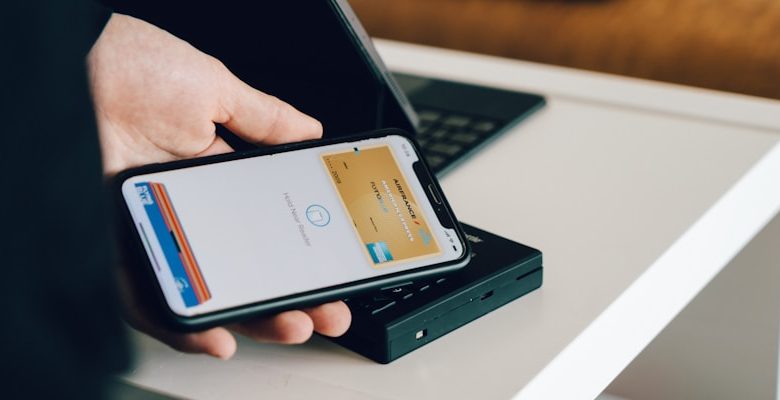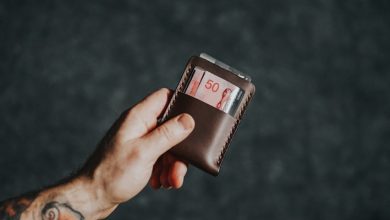Step-by-Step Guide to Setting Up a Hardware Wallet

- Introduction to Hardware Wallets
- Choosing the Right Hardware Wallet for You
- Creating a Secure Backup of Your Hardware Wallet
- Setting Up Your Hardware Wallet Step-by-Step
- Transferring Cryptocurrency to Your Hardware Wallet
- Tips for Safely Storing Your Hardware Wallet
Introduction to Hardware Wallets
Hardware wallets are physical devices that store cryptocurrency private keys offline, providing an extra layer of security against online threats such as hacking and malware. These devices are considered one of the safest ways to store cryptocurrencies long-term, as they are immune to cyber attacks that can compromise software wallets. With a hardware wallet, users can securely manage their digital assets without the risk of exposing their private keys to potential threats on the internet.
Unlike software wallets, which are connected to the internet and vulnerable to cyber attacks, hardware wallets keep private keys offline and only connect to a computer or mobile device when a transaction needs to be signed. This isolation from the internet significantly reduces the risk of unauthorized access to the private keys, making hardware wallets an ideal choice for those looking to secure their cryptocurrencies for the long term. By using a hardware wallet, users can have peace of mind knowing that their digital assets are safely stored and protected from potential threats.
Setting up a hardware wallet is a straightforward process that typically involves initializing the device, creating a PIN code, and generating a recovery seed phrase. The recovery seed phrase is a list of words that can be used to restore access to the wallet in case the device is lost or damaged. It is crucial to keep this seed phrase in a secure location, as anyone with access to it can potentially gain control of the wallet and the funds stored within it. To ensure maximum security, it is recommended to store the seed phrase offline in a safe place, such as a safe deposit box or a secure location in your home.
Choosing the Right Hardware Wallet for You
When choosing the right hardware wallet for your cryptocurrency needs, it is important to consider a few key factors. One of the most important things to look for is security. Ensure that the hardware wallet you choose has strong encryption and multi-factor authentication to protect your digital assets.
Another important factor to consider is compatibility. Make sure that the hardware wallet you choose supports the cryptocurrencies you plan to store. Some wallets only support a limited number of coins, so be sure to check before making your decision.
Additionally, consider the ease of use of the hardware wallet. Look for a wallet that has a user-friendly interface and clear instructions for setting it up and transferring your funds. You don’t want to struggle with a complicated wallet when trying to access your funds quickly.
Lastly, consider the reputation of the hardware wallet manufacturer. Look for reviews and feedback from other users to ensure that the wallet you choose is reliable and trustworthy. Remember, the security of your digital assets is at stake, so it is important to choose a reputable and secure hardware wallet.
Creating a Secure Backup of Your Hardware Wallet
To ensure the security of your digital assets stored on a hardware wallet, it is crucial to create a secure backup. Follow these steps to set up a secure backup of your hardware wallet:
1. **Identify the Backup Method**: Determine the backup method that works best for you. This could include using a paper wallet, a metal backup, or a digital backup stored in a secure location.
2. **Write Down the Recovery Phrase**: Your hardware wallet will provide you with a recovery phrase consisting of 12 to 24 words. Write down this recovery phrase and store it in a safe place away from prying eyes.
3. **Make Multiple Copies**: It is recommended to make multiple copies of your recovery phrase. This will ensure that you have a backup in case one copy gets lost or damaged.
4. **Keep it Secure**: Store your backup in a secure and fireproof location. Avoid storing it on your computer or in the cloud, as these can be vulnerable to hacking.
5. **Test the Backup**: Once you have created your backup, test it by resetting your hardware wallet using the recovery phrase. This will ensure that you can access your funds in case of an emergency.
By following these steps, you can create a secure backup of your hardware wallet and protect your digital assets from loss or theft. Remember to update your backup regularly and keep it up to date with any changes to your wallet.
Setting Up Your Hardware Wallet Step-by-Step
To set up your hardware wallet, follow these step-by-step instructions. First, **unpack** your hardware wallet from the box carefully. **Ensure** that all the components are included and in good condition. **Next**, connect your hardware wallet to your computer using the USB cable provided. **Then**, turn on the device by pressing the power button. **After** that, you will be prompted to set up a PIN code for added security. **Choose** a PIN code that is easy for you to remember but difficult for others to guess. **Proceed** to confirm your PIN code. **Once** your PIN code is set up, you will be given a **recovery** phrase consisting of 24 words. **Write** down this recovery phrase on the provided recovery sheet and keep it in a safe place. **Avoid** storing it digitally to prevent hacking.
Transferring Cryptocurrency to Your Hardware Wallet
Now that you have successfully set up your hardware wallet and have created a secure backup, you may want to transfer your cryptocurrency assets to it for safe storage. Follow these steps to transfer your cryptocurrency to your hardware wallet:
- Log in to your cryptocurrency exchange account where your assets are currently stored.
- Locate the option to withdraw or send cryptocurrency.
- Select the cryptocurrency you wish to transfer and enter the amount.
- Enter the receiving address provided by your hardware wallet. Make sure to double-check the address to avoid any errors.
- Confirm the transaction and wait for it to be processed. This may take some time depending on the network congestion.
- Once the transaction is confirmed, you will see the cryptocurrency in your hardware wallet’s balance.
It is important to note that once you have transferred your cryptocurrency to your hardware wallet, you are in full control of your assets and are responsible for keeping your recovery phrase safe. By following these steps, you can securely store your cryptocurrency in a hardware wallet for added peace of mind.
Tips for Safely Storing Your Hardware Wallet
When it comes to safely storing your hardware wallet, there are a few key tips to keep in mind to ensure the security of your cryptocurrencies. Here are some important considerations:
- Keep your hardware wallet in a secure location that is not easily accessible to others. This could be a safe, a locked drawer, or a hidden spot in your home.
- Avoid storing your hardware wallet in a place where it could be damaged by water, fire, or extreme temperatures. Consider using a protective case for an extra layer of security.
- Make sure to keep your recovery seed phrase in a separate and secure location from your hardware wallet. This will ensure that you can access your funds even if your wallet is lost or stolen.
- Consider creating multiple copies of your recovery seed phrase and storing them in different secure locations. This will provide added redundancy in case one copy is lost or damaged.
- Regularly check on your hardware wallet to ensure it is functioning properly and has not been tampered with. If you notice any unusual activity, contact the manufacturer immediately.
By following these tips, you can help protect your cryptocurrencies and ensure that your hardware wallet remains secure. Remember, it’s always better to be safe than sorry when it comes to safeguarding your valuable assets.



